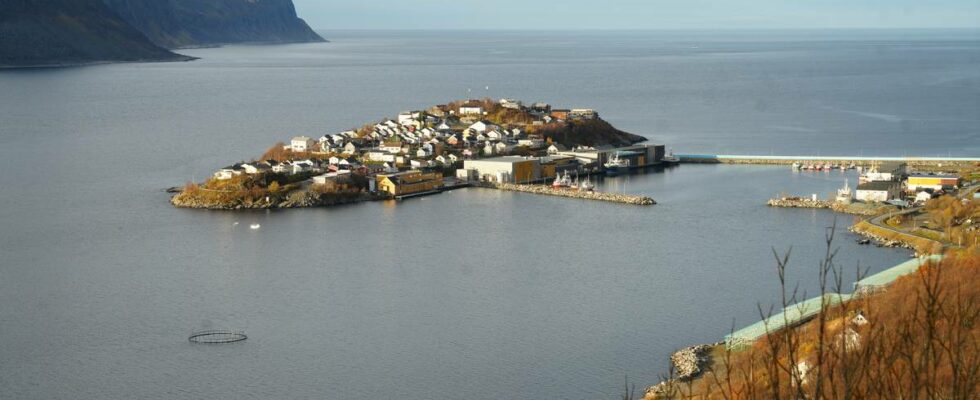– The government has been concerned that the municipalities should get their share of the income from the nature-based industries, and this is what we are seeing the result of now, says Storting representative from Nordland, Bjørnar Skjæran (Ap). This year, the state will pay out NOK 3.7 billion from the aquaculture fund. That is one billion more than in 2022, and a new record. In addition to the sale of concessions, income from ground rent tax on aquaculture and a separate production tax, the municipalities’ income from the aquaculture industry will reach NOK 5.5 billion in 2024. This year Senja municipality will receive NOK 126 million from the aquaculture fund, and has received over 350 million NOK in the last four years, making it the country’s third largest aquaculture municipality. As the home municipality for Salmar, and with over 45 active aquaculture locations, Frøya is Norway’s largest aquaculture municipality, and has also had the largest incomes over the past four years. Hitra is also a large aquaculture municipality, and is the country’s fifth largest aquaculture municipality in terms of revenue. In Nærøy municipality in Trøndelag, Salmar has acquired the aquaculture activities of both Norwegian Royal Salmon and SalmoNor. Trøndelag municipality is the second largest aquaculture municipality in Norway measured in terms of revenue. Senja municipality is the country’s third largest aquaculture municipality, and has had considerable local activity, which has been partly acquired by Salmar. According to a report from Nofima in 2023, there were 673 employees in activities in the aquaculture industry in the municipality. The home municipality of Fisheries and Oceans Minister Marianne Sivertsen Næss (Ap) is also the country’s fourth largest aquaculture municipality. In particular, the Japanese-owned, formerly state-owned, Cermaq company and Grieg Seafood from Bergen have major activities in the municipality. Stavanger is the country’s 6th largest aquaculture municipality measured in terms of revenue since 2020. In 2024, the municipality will be paid NOK 74 million from the aquaculture fund. More for the municipalities As last year and the year before that, it is the Trønder island municipalities of Frøya and Nærøysund that receive the most payments from the fund. Frøya gets just over NOK 153 million, and Nærøysund gets just over NOK 152 million. Frøya is also the municipality that loses the most per inhabitant from the government’s new revenue system for municipalities. The record sum is due, among other things, to high prices at the auction of breeding permits. – Today, the money comes back to the coastal communities instead of large parts being sent out of the country as dividends, says Finance Minister Trygve Slagsvold Vedum (Sp) in a press release. As last year and the year before that, it is the Trønder island municipalities of Frøya and Nærøysund that receive the most payments from the fund. Frøya gets just over NOK 153 million, and Nærøysund gets just over NOK 152 million. Frøya is also the municipality that loses the most per inhabitant from the government’s new revenue system for municipalities. Changed distribution In 2023, the aquaculture industry had a turnover of NOK 110 billion, and had a pre-tax profit of NOK 24.6 billion. With the sale of concessions, a new ground rent tax, a separate production tax and corporation tax, the industry paid in around NOK 14.5 billion in taxes and fees. news’s review shows that the municipalities were left with around 38 per cent of all taxes and fees in 2024. In 2024, the state changed the distribution of income from the sale of farming concessions. The municipalities and county councils receive a total of 55 per cent of the income that is distributed every year. – The government has been concerned that the municipalities should get their share of the income from the nature-based industries, and this is what we are seeing the result of now, says the parliamentary representative from Nordland, Bjørnar Skjæran (Ap). Sandra Borch (Sp) is a parliamentary representative from Troms. Photo: Hans L. Andreassen/news Senja receives NOK 152 million Storting representative Sandra Borch (Sp) tells news that it is gratifying for the municipalities to receive these funds now. – It looks very good for Troms, and many municipalities are getting significant funds back now for setting aside areas for aquaculture – Senja municipality will receive, among other things, NOK 255 million over four years. Why do they get so much? – After all, Senja is a large farming municipality, so it is about how much farming you have and how many new locations have been created for during the last few years. Therefore, Senja comes out very well, but it is very gratifying that the municipalities are now getting even more from the pot in the aquaculture fund. It comes in handy when local politicians have to prioritize funds for various measures, says Borch. Published 21.10.2024, at 12.06 Updated 21.10.2024, at 12.19
ttn-69
Record payment to the municipalities from the aquaculture fund – news Troms and Finnmark

